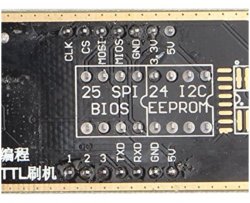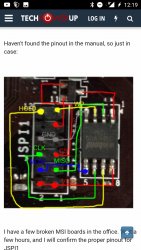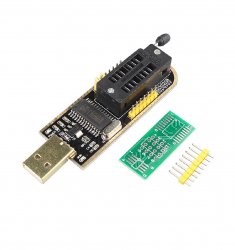- Joined
- Aug 16, 2005
- Messages
- 27,955 (3.84/day)
- Location
- Alabama
| System Name | RogueOne |
|---|---|
| Processor | Xeon W9-3495x |
| Motherboard | ASUS w790E Sage SE |
| Cooling | SilverStone XE360-4677 |
| Memory | 128gb Gskill Zeta R5 DDR5 RDIMMs |
| Video Card(s) | MSI SUPRIM Liquid 5090 |
| Storage | 1x 2TB WD SN850X | 2x 8TB GAMMIX S70 |
| Display(s) | 49" Philips Evnia OLED (49M2C8900) |
| Case | Thermaltake Core P3 Pro Snow |
| Audio Device(s) | Moondrop S8's on Schitt Gunnr |
| Power Supply | Seasonic Prime TX-1600 |
| Mouse | Razer Viper mini signature edition (mercury white) |
| Keyboard | Wooting 80 HE White, Gateron Jades |
| VR HMD | Quest 3 |
| Software | Windows 11 Pro Workstation |
| Benchmark Scores | I dont have time for that. |
Blackcat expects the bios file to be packed in a Zip file which only complicates things.
For what programming the BC or the chip? because it doesnt either way. Also by forums Im assuming you must mean these.
https://blackcatusb.net/index.php
because that site is NOT the official in any way shape or form.




 I've been checking back to see how this goes.
I've been checking back to see how this goes. I first flashed with the original saved BIOS ...that was a different size from what the downloaded versions are but couldn't get it to boot again, just turn on.
I first flashed with the original saved BIOS ...that was a different size from what the downloaded versions are but couldn't get it to boot again, just turn on.



 I've tried it on two different boards.
I've tried it on two different boards.